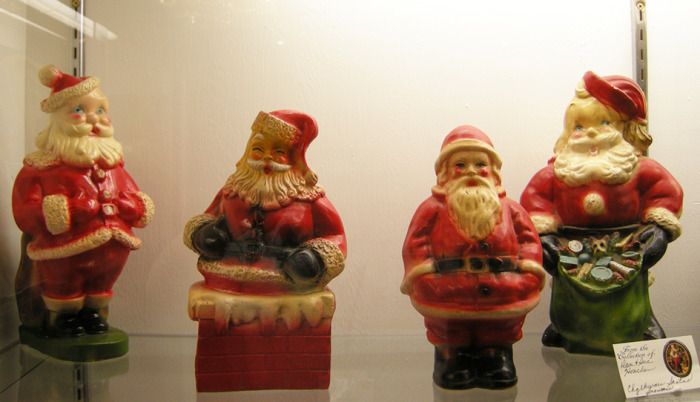Celluloid holiday items are widely collected today as they reflect a charming appeal of days gone by. First invented in 1869 by Albany, NY printer John Wesley Hyatt, celluloid found a myriad of applications in consumer products ranging from dentures, eyeglasses and waterproof collars to vanity items, ornamental combs and jewelry.
By the late 1880s, the first toys, such as simple ball shaped baby rattles with a teething ring or handle attached, were being marketed. Around the turn of the 20th century, German manufacturers began blow molding sheet celluloid into small, lightweight dolls. This was the beginning of a booming industry that spread throughout Europe, Japan and the United States.
 The Viscoloid Company, founded in 1901 in Leominster, MA, was America’s most prolific manufacturer of celluloid blow molded holiday toys. At the onset of WWI, trade with European toy manufacturers ceased. Since German design was highly regarded in the toy industry, Viscoloid hired German artist/sculptor Paul Kramme to design toys. His Santa figures were embraced by the public as they were inexpensive and exhibited old world charm. Eventually Kramme and his staff designed toys that represented not only Christmas, but Easter, Halloween and Independence Day.
The Viscoloid Company, founded in 1901 in Leominster, MA, was America’s most prolific manufacturer of celluloid blow molded holiday toys. At the onset of WWI, trade with European toy manufacturers ceased. Since German design was highly regarded in the toy industry, Viscoloid hired German artist/sculptor Paul Kramme to design toys. His Santa figures were embraced by the public as they were inexpensive and exhibited old world charm. Eventually Kramme and his staff designed toys that represented not only Christmas, but Easter, Halloween and Independence Day.
During the 1920s, Japanese manufacturers copied many designs of German and American origin. The heyday of Celluloid toy production in America dated until the mid-1920s when the Viscoloid Company employed 300 full time workers in the toy making department alone. Celluloid lost favor with consumers because of its dangerous flammability and toy production dwindled by the 1930s. In Europe and Japan, manufacturers continued production until the late 1950s.









